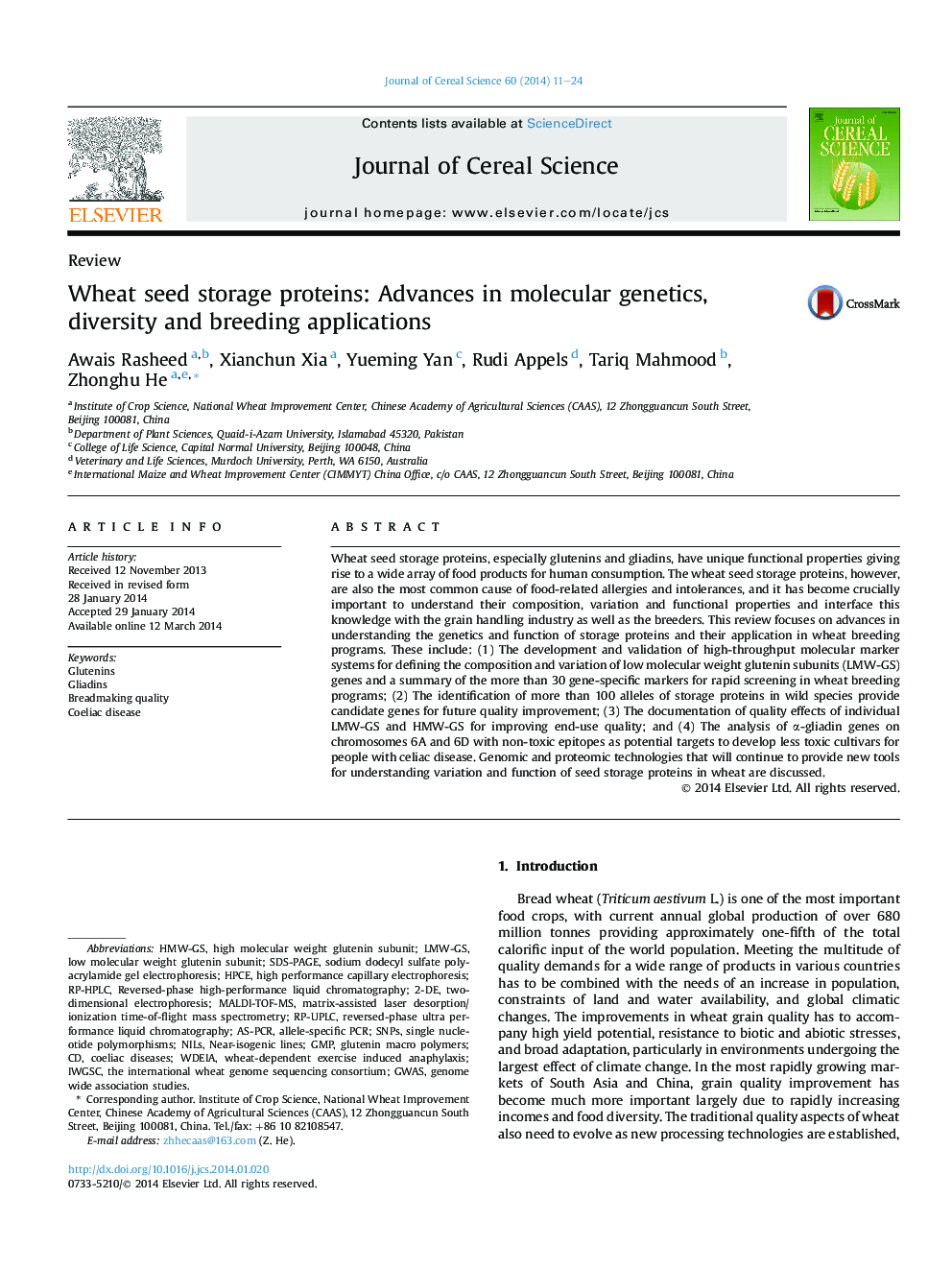| کد مقاله | کد نشریه | سال انتشار | مقاله انگلیسی | نسخه تمام متن |
|---|---|---|---|---|
| 4515781 | 1322325 | 2014 | 14 صفحه PDF | دانلود رایگان |
• 30 allele-specific markers for characterization of glutenins have been developed.
• More than 100 novel alleles of storage proteins have been identified from wild species.
• Quality effects of individual glutenin alleles have been well documented.
• α-Gliadin genes on chromosome 6A and 6D will be useful to develop less toxic cultivars.
• Future prospects of genomics and proteomics technologies are discussed.
Wheat seed storage proteins, especially glutenins and gliadins, have unique functional properties giving rise to a wide array of food products for human consumption. The wheat seed storage proteins, however, are also the most common cause of food-related allergies and intolerances, and it has become crucially important to understand their composition, variation and functional properties and interface this knowledge with the grain handling industry as well as the breeders. This review focuses on advances in understanding the genetics and function of storage proteins and their application in wheat breeding programs. These include: (1) The development and validation of high-throughput molecular marker systems for defining the composition and variation of low molecular weight glutenin subunits (LMW-GS) genes and a summary of the more than 30 gene-specific markers for rapid screening in wheat breeding programs; (2) The identification of more than 100 alleles of storage proteins in wild species provide candidate genes for future quality improvement; (3) The documentation of quality effects of individual LMW-GS and HMW-GS for improving end-use quality; and (4) The analysis of α-gliadin genes on chromosomes 6A and 6D with non-toxic epitopes as potential targets to develop less toxic cultivars for people with celiac disease. Genomic and proteomic technologies that will continue to provide new tools for understanding variation and function of seed storage proteins in wheat are discussed.
Journal: Journal of Cereal Science - Volume 60, Issue 1, July 2014, Pages 11–24
